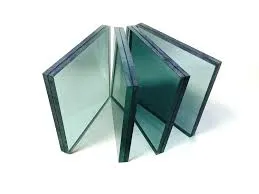The Process of Making Toughened Glass
Toughened glass, also commonly referred to as tempered glass, is a type of safety glass that has been treated to withstand greater stress than standard glass. The production of toughened glass involves a carefully controlled process that enhances its strength and thermal resistance, making it suitable for a wide range of applications, from windows and doors to shower enclosures and glass facades.
The first step in the manufacturing of toughened glass is the selection of raw materials. The primary ingredient is silica sand, which is combined with several other materials such as soda ash and limestone to create glass. The composition of the glass is crucial as it impacts properties like strength, clarity, and thermal stability. Once the raw materials are mixed homogenously, the mixture is melted in a furnace at temperatures reaching around 1,700 degrees Celsius (3,092 degrees Fahrenheit). This high temperature allows the materials to fuse and form molten glass.
The Process of Making Toughened Glass
Once the glass sheets have been cooled and cut to the desired dimensions, they are ready for the toughening process. Toughening involves rapidly heating the glass to a temperature of about 600 degrees Celsius (1,112 degrees Fahrenheit) and then quickly cooling it through a process called quenching. This process creates significant internal stress within the glass. The rapid temperature change causes the surface to cool faster than the interior, resulting in a strong compressive surface layer that enhances the glass's overall strength.
process of making toughened glass
The quenching phase is vital, as it is during this stage that the glass's properties drastically change. Toughened glass can withstand higher impacts and is more resistant to thermal shocks compared to conventional glass. If an accident occurs and the glass is broken, it shatters into small, blunt pieces instead of sharp shards, significantly reducing the risk of injury.
After toughening, the glass undergoes a quality control process where it is inspected for any flaws or defects. This ensures that only high-quality toughened glass products make it to the market. The glass can also be subjected to additional processes such as edge finishing, coating, or printing, depending on the specific requirements of the application.
The applications of toughened glass are vast and varied. It is widely used in the construction industry for facades, windows, and partitions due to its strength and aesthetic appeal. In the automotive industry, tempered glass is commonly used for windscreens and side windows, enhancing passenger safety. Additionally, toughened glass is popular in household items, including oven doors, shower doors, and glass furniture.
In conclusion, the process of making toughened glass is a sophisticated interplay of materials science, engineering, and manufacturing techniques. From the careful selection of raw materials to the precise methods of heating and cooling, each stage is essential in producing glass that is not only strong but also safe. As a result, toughened glass continues to be a preferred choice for a multitude of applications, meeting the demands of safety, durability, and design in modern architecture and everyday life.
 Afrikaans
Afrikaans  Albanian
Albanian  Amharic
Amharic  Arabic
Arabic  Armenian
Armenian  Azerbaijani
Azerbaijani  Basque
Basque  Belarusian
Belarusian  Bengali
Bengali  Bosnian
Bosnian  Bulgarian
Bulgarian  Catalan
Catalan  Cebuano
Cebuano  Corsican
Corsican  Croatian
Croatian  Czech
Czech  Danish
Danish  Dutch
Dutch  English
English  Esperanto
Esperanto  Estonian
Estonian  Finnish
Finnish  French
French  Frisian
Frisian  Galician
Galician  Georgian
Georgian  German
German  Greek
Greek  Gujarati
Gujarati  Haitian Creole
Haitian Creole  hausa
hausa  hawaiian
hawaiian  Hebrew
Hebrew  Hindi
Hindi  Miao
Miao  Hungarian
Hungarian  Icelandic
Icelandic  igbo
igbo  Indonesian
Indonesian  irish
irish  Italian
Italian  Japanese
Japanese  Javanese
Javanese  Kannada
Kannada  kazakh
kazakh  Khmer
Khmer  Rwandese
Rwandese  Korean
Korean  Kurdish
Kurdish  Kyrgyz
Kyrgyz  Lao
Lao  Latin
Latin  Latvian
Latvian  Lithuanian
Lithuanian  Luxembourgish
Luxembourgish  Macedonian
Macedonian  Malgashi
Malgashi  Malay
Malay  Malayalam
Malayalam  Maltese
Maltese  Maori
Maori  Marathi
Marathi  Mongolian
Mongolian  Myanmar
Myanmar  Nepali
Nepali  Norwegian
Norwegian  Norwegian
Norwegian  Occitan
Occitan  Pashto
Pashto  Persian
Persian  Polish
Polish  Portuguese
Portuguese  Punjabi
Punjabi  Romanian
Romanian  Russian
Russian  Samoan
Samoan  Scottish Gaelic
Scottish Gaelic  Serbian
Serbian  Sesotho
Sesotho  Shona
Shona  Sindhi
Sindhi  Sinhala
Sinhala  Slovak
Slovak  Slovenian
Slovenian  Somali
Somali  Spanish
Spanish  Sundanese
Sundanese  Swahili
Swahili  Swedish
Swedish  Tagalog
Tagalog  Tajik
Tajik  Tamil
Tamil  Tatar
Tatar  Telugu
Telugu  Thai
Thai  Turkish
Turkish  Turkmen
Turkmen  Ukrainian
Ukrainian  Urdu
Urdu  Uighur
Uighur  Uzbek
Uzbek  Vietnamese
Vietnamese  Welsh
Welsh  Bantu
Bantu  Yiddish
Yiddish  Yoruba
Yoruba  Zulu
Zulu 

